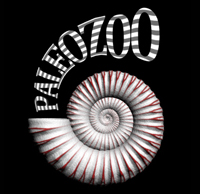The creatures of the Ediacaran period (635 - 542 Mya) are the most ancient complex multi-cellular lifeforms yet discovered. The distinctive and varied biota of this period represent something of a mystery to palaeontology as it is still not clear what kinds of lifeform they actually were or what relationships existed with the lifeforms that followed in the Cambrian period and beyond.
In the history of life on Earth the Ediacaran period is now regarded as a watershed in the biological timeline. This was the period in which anatomical characteristics such as bilateralism, locomotion, heads and tails and internal organs all first appeared.

During the Ediacaran period most anatomy was hydrostatic in nature - bodies comprised of tissue segments filled with pressurised fluid, similar to modern worms. Some organisms were comprised of simple sequenced cellular units (metamerism) while others like the rangeomorphs displayed more complex fractal ordering. Repetition of these simple forms - in conjunction with changing environments and genetic variation - is thought to have led to ever more complex lifeforms.
Rangeomorphs have proven particularly difficult to classify as their morphology is unlike any known modern body-plan or phylum, which poses the question - what kind of life were they?
No clear evidence of developed gut systems has appeared in the fossil record from this time so it is thought that most creatures absorbed nutrients directly through membrane wall contact with the surrounding enriched waters (osmosis). The general makeup of these membranes or skins is also largely unclear, but it is thought that some amount of hardening had taken place (though not full mineralisation) which allowed for the subsequent fossil preservation.
These creatures lived within complex ecosystems that spanned the globe (Droser, Gehling, 2015). Some lifeforms thrived in the darkness of deep waters, while others roamed across wide, shallow seas. Fossil evidence from diverse regions indicates that complex life was abundant throughout the world’s oceans during the Ediacaran period, not confined to isolated pockets. This reflects a broader pattern seen throughout evolutionary history: when life establishes itself in a newly available environment — often created by a prior mass extinction — it typically undergoes rapid expansion, filling every available niche through a dynamic process of adaptive radiation.
Unlike the creatures of the Cambrian period that were to follow, very few of the Ediacaran biota can as yet be associated with any modern phylum. Many are thought to have become extinct during a period of global mass extinction that occurred just before the Cambrian period. The cause of this mass extinction remains unknown but it resulted in radically different environmental conditions that may have included elevated oxygen levels and a change in the nutrient content of the seas. With those changed conditions whole new phyla emerged that constitute the base morphology of most lifeforms we know today.
The creatures of the Ediacaran period await full taxonomic classification.
